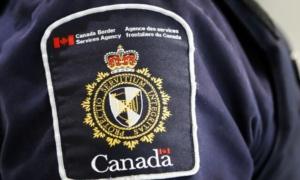Privacy Concerns Arise as 2 Ontario Police Forces Implement Facial Recognition Technology
Facial recognition technology is now being used by two police services in the Greater Toronto Area as part of their investigations. This has raised concerns from advocates regarding potential privacy rights violations.
Peel Regional Police Service and York Regional Police Service recently announced the adoption of facial recognition software after consultations with the province’s information and privacy commissioner. Public consultations were also conducted in March and April.
These two police forces, in a joint initiative, started using software from Idemia on May 27. Idemia is a multinational technology company based in France specializing in facial recognition and biometric identification products and software.
The software will automate certain aspects of their existing mugshot databases, the police stated.
Privacy Concerns
The use of facial recognition technology by the two forces has prompted concerns from the Criminal Lawyers’ Association (CLA).
CLA Vice-President Michelle Johal expressed worries about the potential violation of the right to be free from unreasonable search and seizure due to the use of facial recognition software.
Johal highlighted the possibility of individuals facing privacy risks, especially considering that not all individuals with criminal booking images or prints captured by police are convicted of a criminal offense.
The retention of pictures and prints even when charges are withdrawn raised further concerns for Johal. Delays in processing requests for destruction of images and prints, especially based on the seriousness of charges, were also noted.
York Regional Police media relations officer Kevin Nebrija, however, refuted claims of privacy rights infringements related to the technology. Nebrija emphasized that the use of facial recognition software does not change privacy aspects significantly. He mentioned that images used in the system must be collected lawfully by investigators through witness cooperation or a warrant.
Nebrija clarified that images obtained during criminal investigations are only compared to existing mugshots in the police database, with no searching through social media or other networks. He also assured that live streaming videos won’t be used for arrests. Instead, they are used as an investigative lead requiring validation by a trained human investigator.
Facial Recognition Guidance
Ontario’s Information and Privacy Commissioner (IPC) released guidance on police usage of facial recognition and mugshot databases earlier this year. The IPC highlighted the need for a careful, transparent, and accountable approach to using facial recognition in law enforcement.
The report outlined considerations like image quality standards, evaluating bias, and providing extensive operator training for the use of facial recognition technology.
Early Facial Recognition Use
Peel and York are not the first police forces in the GTA to implement facial recognition technology. The Toronto Police Service previously used technology from Clearview AI for criminal investigations before discontinuation due to privacy concerns.
Read more here.
Following the investigation, Clearview AI ceased offering its services in Canada, including the suspension of its RCMP contract. The RCMP also developed an internal directive limiting facial recognition use to specific critical circumstances, such as victim identification in certain investigations.
The Canadian Press contributed to this report.





